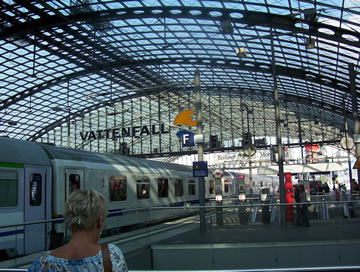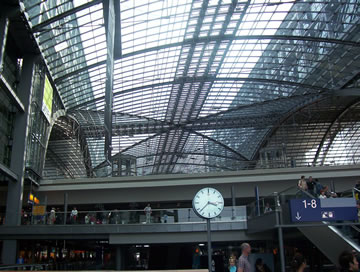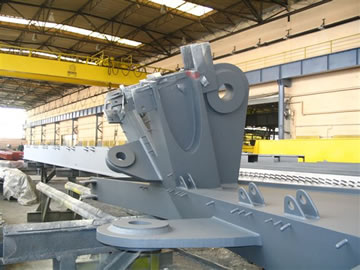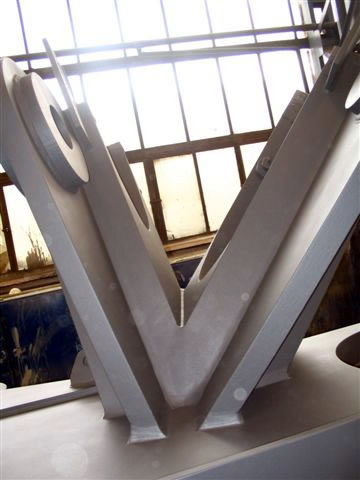
This project involved the supply of a steel constructions with total tonnage of 1450 tonnes for the prestigious modernisation of Lehrter Bahnhof Main Railway Station in Berlin.
 Basic information
Basic information
Number of platforms:
6 + 1 SKM + 1 m
Number of tracks:
12 + 2 SKM + 2 m
Ticket windows: yes
Overpass: yes
Underpass: yes
History
Construction date:
1868-1871 - the new facility
1995-2006
Previous names:
Berlin Lehrter Bahnhof
Berlin Lehrter Stadtbahnhof
Berlin Hauptbahnhof - Lehrter Bahnhof
The first railway station, Lehrter Bahnhof, was erected in Berlin in 1868-1871 by Magdeburg-Halberstädter Eisenbahn-Actiengesellschaft as a main railway station at the end-point of the 239-kilometre Lehrte railway connecting Berlin and Hannover. For political reasons the name of the railway station was taken from the town of Lehrte near Hannover, the last station in Prussia. The railway station was built at Humboldthafen wharf in a Neo-renaissance style according to the architectural designs of Alfred Lent, Bertold Scholz and Gottlieb Henrie Lapierre. The railway station hall was 188 m long and 38 m wide and initially housed five, and later four, tracks (its manoeuvring track was closed down around 1900). The main elevation of the facility faced south and the tracks ran northwards.
On 15 May 1882 another railway station was opened nearby. The station belonged to Stadtbahn of Berlin (a long bridge railway station). This two-track local station was located on a viaduct over Lehrter Bahnhof's access tracks, transversely to it in a parallel direction. The railway station was named Lehrter Stadtbahnhof (Lehrte Municipal Railway Station). In 1886 Lehrte railway and the station for long-distance trains were nationalised.
During WWII the station for long-distance trains was severely damaged. However, it was reopened shortly after the war. On 28 August 1951 the railway station located on the outskirts of Western Berlin was finally closed and on 9 July 1957 demolition work was started. On 22 April 1958 the main portal was blown up. The demolition material was used to rebuild the city. The historical Lehrte Municipal Railway Station was renovated in 1987 at a cost of 10 million marks to mark the 750th anniversary of the City of Berlin. In the summer of 2002 a new railway station was built, the old one was deleted from the list of historical buildings, and demolition work began.
The present railway station
The present railway station was designed by Meinhard von Gerkan of gmp company and is the largest railway station in the world with a tower structure. It is located at the crossing point of the existing four-track bridge line running from east to west and a four-track line located in the tunnel and running from north to south. Three platforms were erected on the overhead line (with six edges), one of which was designated for fast city trains and the other two for ICE railway traffic. The underground line had four platforms (with eight edges), all of which were available for ICE traffic. Additionally, an underground station was located parallel to the railway platforms. However, it has not been opened yet.
The ground-based platforms are covered with a glass arched roof based on a structure consisting of steel arches and flexible connectors. The roof intersects the equally high cover of the railway station hall facing north and south and flanked on both sides by office buildings positioned on bridges over the tracks. The middle floors of the railway station, an underground mezzanine and other areas house numerous commercial outlets.







